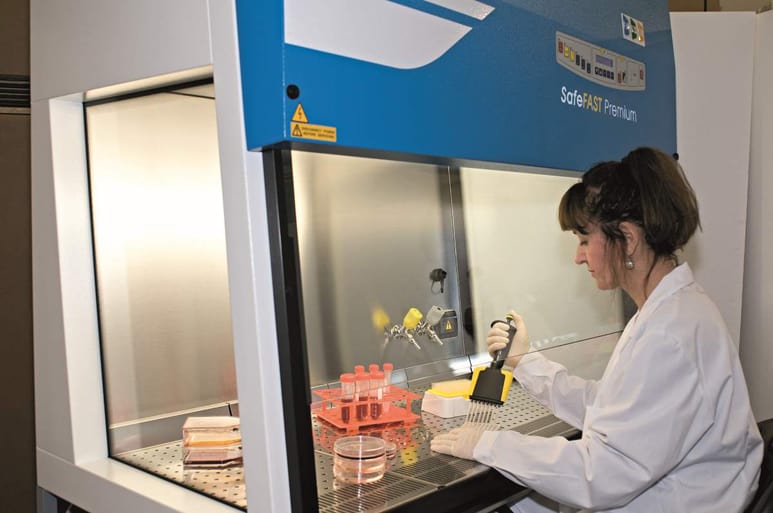Biological safety cabinets (BSCs) serve two main purposes:
- Protect your samples from contamination by external sources
- Protect the operator and environment from being contaminated by the sample
This protection is achieved using filters and laminar air flow to create an invisible barrier between the cabinet and the outside environment. When this barrier is functioning correctly, the risk of cross-contamination is very low. Follow the below tips to ensure your BSC stays contamination free.
Laminar Air Flow
To minimise the risk of contamination, it is vital that proper laminar air flow is maintained inside the cabinet. Install BSCs away from doors and high traffic areas to avoid disturbances to the airflow within the cabinet. Minimise the number of items inside the unit to avoid blocking the air intake grills as this may disrupt airflow. Fast arm movements also increase the risk of turbulence inside the cabinet so slow controlled movements are always best. Minimise moving arms in and out of the cabinet wherever possible.
HEPA Filters
Another important aspect to consider is the performance of the filters. HEPA filters trap 99.97% of particles 0.3 µm in diameter which provides an effective barrier against bacteria and viruses. If any filter has visible signs of damage or leaks it should be fixed or replaced immediately. HEPA filters become loaded with particles over time, so it is important to test their efficiency during preventative maintenance visits and replace if needed.
Cleaning Agents
While bleach is amazing at killing bacteria and viruses, chlorine can be corrosive to steel surfaces. For routine cleaning, 70% ethanol is an effective disinfectant and does not cause damage to the surfaces. Bleach can be used occasionally, such as in the event of a biological spill, but should be removed fully after the specified contact time and followed by sterile water and 70% IPA to remove any corrosion-causing residues. Disinfect work surfaces before and after working to minimise or eliminate surface contamination. Periodically remove the work surface and thoroughly clean and disinfect the area underneath. If you are unsure about what cleaning agents to use, refer to the user manual or contact your BSC supplier for guidance.
UV Sterilisation
Ultraviolet (UV) light has been used routinely in biological safety cabinets as an extra layer of disinfection for years. UV light kills most microorganisms and can hit hard to reach areas, making it an ideal add-on to a comprehensive disinfection protocol. However, UV should not be used as the primary source of disinfecting a contaminated cabinet. It is also important to protect yourself from UV exposure, which can cause damage to the skin and eyes. UV lamps should be turned off while the room is occupied and the sash should be closed when the UV light is on. UV bulbs have a recommended lifespan and need to be replaced as they lose effectiveness over time. Dirt and dust on the bulb will also reduce its sterilizing power so make ensure the bulb is cleaned if needed.
Aseptic Technique
The BSC should be turned on and allowed to operate for at least 10 minutes to purge airborne contaminants before use. Ensure everything you need for testing is inside the BSC before you start your work and is either sterile or has been disinfected. Wear personal protective equipment, such as gloves, to avoid introducing contamination from the operator’s skin. Disinfect gloves, samples, packaging etc. whenever they touch a non-sterile surface outside the BSC. Ensure all clean and dirty items are segregated within the BSC and arrange items in a logical sequence from clean to dirty to avoid moving contaminated materials over clean surfaces. Work should not be carried out too close to the sash – keep all materials well inside the cabinet where the air flow is optimal. The use of open flames, such as Bunsen burners, inside BSCs is not recommended as the heat will disrupt the laminar air flow. Since space is limited, the risk of burns and other injuries when using a Bunsen burner is also increased when working inside the confines of a BSC.
Faster Biological Safety Cabinets
If you are looking for a high-performance biological safety cabinet with full cleanability, Faster’s SafeFAST range offers the following features:
- Anti-Bacterial Coating: SafeFAST cabinets are coated with an exclusive Dupont™ ALESTA® anti-bacterial “Ag+ cations-based solution” which inhibits microbial contamination on surfaces
- Real Laminar Air Flow: The front and back panels of SafeFAST cabinets have a 7° slope and are parallel to each other, resulting in a truly laminar air flow pattern inside the cabinet.
- Easy Cleanability: SafeFAST cabinets come with an electrically operated safety glass front window which is hinged to allow full opening during cleaning and routine maintenance.

- Removable Work Surface: SafeFAST Premium cabinets have stainless steel AISI 316L work surfaces as standard which are removable for cleaning and/or autoclaving. The work surface can be supplied as a solid piece with rounded corners or with perforations, depending on your needs.

- Portable UV Lamp (optional): The optional UV lamp can be placed anywhere on the back wall of the cabinet and comes with adjustable countdown timers. SafeFAST cabinets have a number of UV safety features:
- UV lamp only works when lights are off – switching on lights will disable UV
- Starting up the cabinet switches off a UV cycle
- When UV is on, the front sash cannot be raised
- Audio-visual alarm for end of UV lamp lifecycle
- Anti-UV glass used in cabinets

If you would like more information on Faster’s range of biological safety cabinets, contact your account manager or get in touch below:


